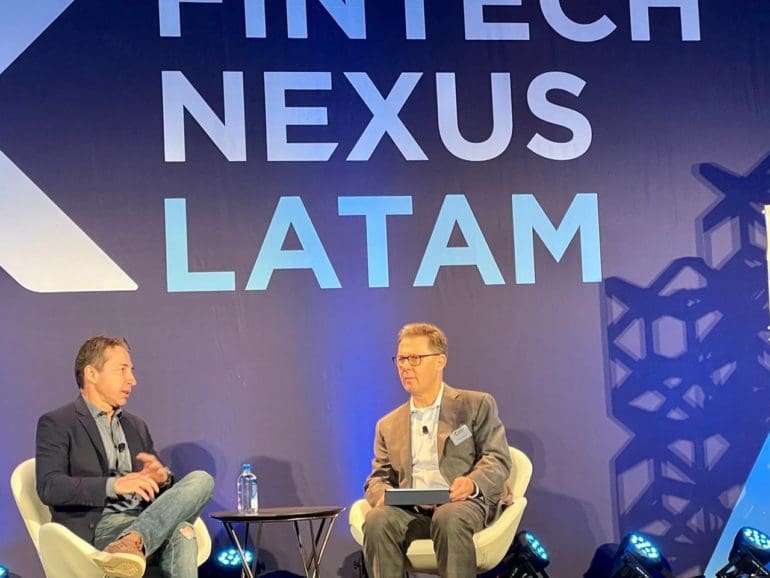MIAMI, Fla. — Pix, Brazil‘s instant payment system launched just two years ago, has led to a dramatic acceleration in financial inclusion efforts in the country, Carlos Eduardo Brandt, one of the masterminds behind the project, said at Fintech Nexus LatAm 2022.
“In Brazil, 64 million people have made their first digital transaction with Pix,” Brandt, head of the Pix Management and Operation team at the Central Bank, said. “We always thought it was going to be successful. But the speed at which it happened really surprised us.”
Introduced by the central bank in late 2020, Brazil’s low-cost instant payment system saw wide adoption from an early start. In the first few months, it was quickly embraced by the adult population, many of whom lacked until then a bank account or did not make significant use of financial products.
Since its rollout, Pix numbers have been growing consistently.
In Brazil, it‘s everywhere
Today, it is ubiquitous in most Brazilian cities. Its payment mechanism is profoundly embedded in day-to-day transactions. The regulator processes half a million operations per minute, amounting to over a trillion reais ($200 billion) monthly.
As of last month, 130 million individuals were signed up. That is more than half of Brazil‘s entire population.
Brandt argued that a focus on user experience was paramount when asked about the reasons for such fast adoption.
“To achieve financial inclusion, we needed a very simple and intuitive solution,” he said. “We were obsessed with user experience from the beginning.”
To be sure, the benefits of including more people financially abound. “They now don’t have to worry about security with cash on their hands,” Brandt said. “And once they gain access to the financial system, they can get into investments, insurance, and credit. That is important for citizens and the system in terms of business opportunities.”

Promote competition
The decision by the central bank to come up with a low-cost instant payment system was driven by a larger goal to accelerate competition in Brazil. Like many other places in Latin America, a handful of banks typically dominate the local market.
“We wanted to build a new ecosystem from scratch that would be open to both banks and non-banks,” Brandt said at Fintech Nexus LatAm 2022. “One of our goals was to improve competition, and we had a clear view that fintechs are a very important component to achieving that.”
Contrary to other places, experts argue that the system took off in Brazil because of the active role of the regulator. Also, the fact that everyone needed to sign up.
Making Pix mandatory was key to its success in Brazil
While Banco de Mexico‘s CoDi has failed to gain traction, with just a few big banks accounting for most of the transactions, in Brazil, over 700 institutions are formally registered to use the technology. This includes traditional banks in the country, payment institutions, digital banks, and other tech-related companies.
According to Brandt, the fact that Brazil‘s central bank made it mandatory for banks to get involved was a crucial element. Some initially resisted joining, he said, while others, primarily fintechs, were interested in participating in the process. In the end, he said, the central bank placed a must-join rule for banks with over 500,000 customer accounts so they would have to join from day one.
“That is how we achieved critical mass very early,” he said.

Making inroads into e-commerce, going B2B
Although Pix was initially envisaged as a tool to settle peer-to-peer transactions, its growth among companies has also grown.
Almost 11 million companies have signed up to use Pix in Brazil, and B2B transactions now account for roughly a third of all Pix-related transactions in terms of volume. With 340.9 billion reais processed as B2B in October, volume is barely behind P2P payments at 351.4 billion reais.
“The integration needed for B2B was done between late 2021 and early 2022, so this year it has been growing a lot,” Brandt said. “We believe it will grow a lot higher in market share.”
Related:
- Pix breaks further ground in payments market
- How PIX became a LatAm payments phenomenon in just one year
- Why has Pix done so well while CoDi has struggled?
- Prolonged strike at Central Bank slows down innovation agenda in Brazil
In the future, Brandt said improving cross-border payments is one of the main goals as Pix continues to roll out new features. The bank is working on a Pix International feature. It has recently announced an intention to open up protocols to other countries in Latin America that would like to replicate the success. Brandt said, however, that that decision was now under review. “We are analyzing how to do that and the risks involved. But it’s on the agenda.”


